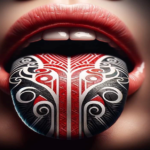The recent introduction of kissing females on the cheek and ignoring the customary practice of a hongi creates a number of issues including the loss of tikanga and the real possibility of discriminating against people in our community.
THe earliest written account in the South Island of Ngai Tahu of the traditional practice of the hongi (hoki) I have found was published in 1939 by Herries Beattie quoting Poua Taare Tikao:
I was at a “tangi” at Temuka. There was abundance of good hearty kisses on the mouth-young fellows even gallantly kissing old, wrinkled dames- but as for the more healthful hoki it was left for a few old-fashioned people.(Tikao & Beattie, 1939)
The demise of Tikanga Māori was noted in the mid 1970’s by Sir Timoti Karetu and Sir Hirini Mead (King, 1992). Again in the mid 1990’s by Aunty Irihapeti Ramsden (Kahukiwa, Irwin, & Ramsden. 1995) and in 2001 by Professor Te Maire Tau (Tau, 2001). Tikanga has never made a substantial revival as we have seen with te reo Māori.
In recent decades, we have become so accustomed to introduced beliefs that our tikanga and mātauranga has eroded so much that even the once common practice of a hongi has been forgotten.
The western and introduced misogynist influences of a kiss on the cheek of a female have become normal replacing centuries old practice of a hongi.
The issue of identity deconstruction of Maori is critical. One example involves Maori imitating colonial gender relationships. Many Maori men are beginning to refuse the traditional ancestral Maori hongi to other Maori who happen to be women. Passive acceptance of that abuse by Maori women is becoming common. Yet these same Maori men will accord the mana of the hongi to the male descendants of their colonisers (Kahukiwa, Irwin, & Ramsden, 1995, p. 111).
Of more of a concern, is that our younger generations who have the taonga of Kōhanga Reo, Kura Kaupapa Māori and culturally safe environments where our tikanga Māori and customary beliefs can shared, are now questioning the colonised practices.
You watch as all of the men hongi all of the men and all of the women receive a kiss on the cheek. I feel my face flush. I don’t want to be rude. I don’t want to be a haututu (mischievous) and embarrass them by laughing or forcing my nose to theirs. So I smile, shake their hand and collect more cheek kisses. 850 and counting.
…..
My grandfather told me it is a spiritual connection between two people that lasts forever.
How could a kiss on the cheek compete? I thought. It takes all of two seconds!
For generations, Māori from all over our land understood its significance and importance. There were no gender biases. No accusations of inequality. It was tikanga (a formal rule) and everyone, I mean everyone, followed it. (Rapata-Hanning, Piata. 2019).
As a Māori male who is often at pōwhiri, it has become my common practice at pōwhiri to wait and watch the body language of the females during the introductions at the end of the pōwhiri. On the times I am not not seated on the paepae, I watch how females act with the men in front of me. Will it be a kiss on the cheek or a hongi?. This will dictate how I will act.
Growing up, I remember everyone male and female received a hongi, not just once but twice. The hongi was not quick and symbolic, but the breath was drawn and inhaled on both occasions. Then depending on the relationship with the female who may have been an Aunty or a friend, sometimes a kiss on the cheek and a hug proceeded the double hongi.
One reason for the inhaling of breath is to share with the other person their hau, thus creating a long time relationship and trust with the person.
Māori often hongi a carving or a photo of an ancestor or with another person so they can mix their hau together (Salmond, 2017, pp. 47, 210, 283).
For other Iwi, the hongi represents the event when Tāne breathed life into the first human being Hine-ahu-one, that he created. Therefore the hongi celebrates life and whānau.
The hongi , the act of pressing noses, has two primary meanings; it is a sign of peace and also a sign of life and well-being. Before they were separated, Ranginui (Sky Father) and Papatuānuku (Each Mother) lived in blissful harmony with each other; there was no anger or strife between them. Ranginui lay stretched out over Papatuānuku and they embraced each other fondly. In this state, they shared the essence and quality of each others being. Such an idyllic state or condition betokens peace and oneness of thought, purpose, desire and hope; and such is the hope; and such is the desire of the hosts and visitors when they greet (hongi) one another at formal speech making on the marae.
The second meaning of the hongi is as a sign of life and immortality and it symbolises the action of the gods in breathing into humans the breath of life
It is customary for some people to hongi twice. The first hongi symbolises unity and peace between the two individuals. The second hongi signifies that the spirit of the deceased lives on in another realm; that in death there is life. By this action, the life force is permanently established and physical bodies become a single living entity. The heart may provide life in the physical sense, but the mauri ensures that the life force is established.
The hongi signifies that life comes from the gods. If the power of the gods is withdrawn the person or creature dies. Our elders have expressed these ideas in this way when speaking of the dead: “You who are deceased, you have been separated – body from spirit – and the spirit ascends to the pinnacle of death’. Therefore, when a person dies and is lying in state on the marae, some people hongi the deceased as a token of life, that life is to say, even though the body is consigned to Mother earth, the spirit lives on and returns to the world of the gods.
For these reasons, then, the custom of the hongi is carried on from generation to generation and carries with it a deep spiritual meaning for Māori. (Barlow, 1991)
Today I rarely witness or experience a double hongi, and I note the process is always very rushed. There is mostly no inhaling and exhaling of the breath. It appears to be more symbolic of touching noses and foreheads. Māori advisors when detailing the pōwhiri process to non Māori participants, from my experience, never state the relevance of the hongi. Today, after the pōwhiri men and women choose if to hongi, kiss on the cheek or even just shake hands.
Formerly the hongi was all that was required. Nowadays the hongi may be followed by a kiss on the cheek and always includes shaking of the hands, the harirū. Some iwi prefer that kissing is limited. The emphasis should be on the hongi (Mead, 2016, p. 130).
There a number of dilemmas and questions to ask if we want to change customary practice of a hongi to a colonised practice of a kiss. If we choose to not hongi females, then do you hongi people who identify as a LGBTQ resulting in discriminating against their human rights, their whakapapa and their wairua? Thus, promoting another faulty introduced belief that contradicts traditional Māori values?
In the new era of Covid-19, hongi are not safe and have been discouraged and banned by most people and marae. The issue is what do we replace a hongi with? If we want to share our hau with someone else, it could possibly be as simple as a hand on the shoulder of each other and looking into each others eyes. Or any other form that you can share a hau with each other.
If we all respect the hongi and its customary purpose, and hongi everyone for the purpose of creating long term relationships and sharing our hau, then we can revive a lost customary practice. I would also argue the Sir Mason Durie Tapa Whā framework would ensure a healthy spiritual balance for Māori if the practice of hongi was more widely used and understood (Durie, 1984).
Respecting and practicing the customary usage of hongi will also allow for any vulnerable people to simply refuse and not participate in the hongi. There should be no explanation required and whānau should be aware of such instances and protect the vulnerable.
References
Image was sourced from https://gg.govt.nz/governor-general/blog/2019/02/onuku-marae-waitangi-day-2019
Barlow, C. (1991). Tikanga whakaaro: Key concepts in Maori culture. Auckland, N.Z: Oxford University Press.
Durie, M. (1984). Te Whare Tapa Whā.
Kahukiwa, R., Irwin, K., & Ramsden, I. M. (1995). Toi wahine: the worlds of Maori women. Auckland, N.Z: Penguin.
King, M. (1992). Te Ao hurihuri: aspects of Maoritanga. Auckland [N.Z.]: Reed.
Mead, S. M. (2016). Tikanga Māori: living by Māori values (Revis ed.). Wellington: Huia Publishers.
Rapata-Hanning, Piata. 2019. Otago Daily Times. Retrieved from https://www.kavanagh.school.nz/latest-news/article/23467
Salmond, A. (2017). Tears of Rangi: experiments across worlds. Auckland: Auckland University Press.
Tau, T. M. (2001). The death of knowledge: ghosts on the plains. The New Zealand Journal of History, 35(2), 131.
Tikao, T. T., & Beattie, H. (1939). Tikao talks: traditions and tales. Dunedin, N.Z: A.H. & A.W. Reed.





Leave a Reply